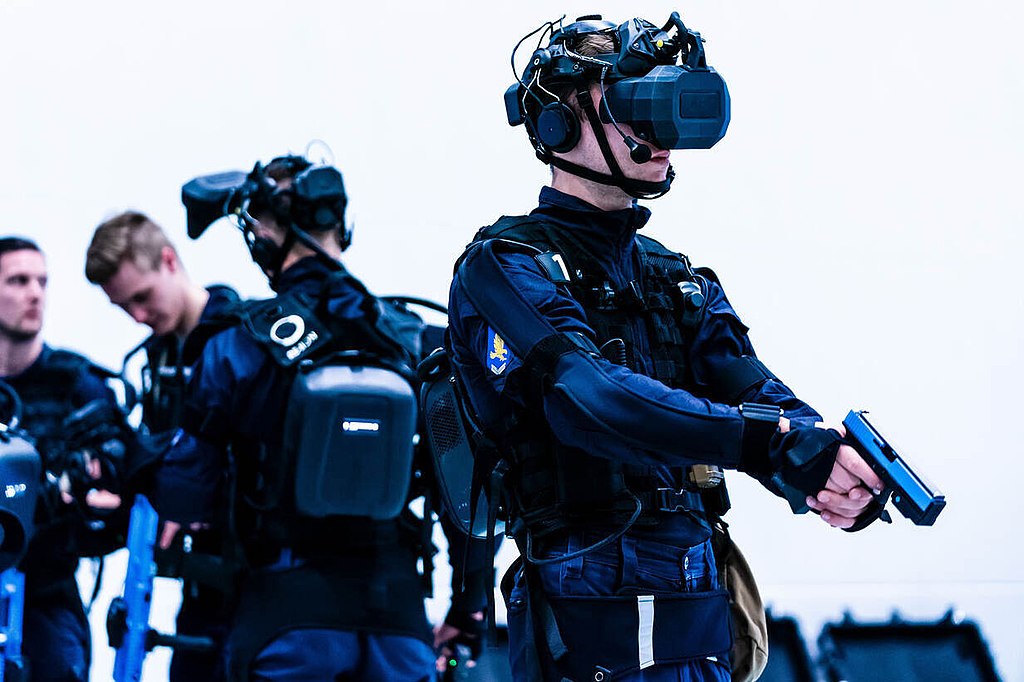Virtual reality (VR) used to be a gimmick, but it’s big business these days as brands like Meta are betting on virtual spaces becoming the new way to spend time with family, friends and coworkers. The Meta Quest 2 VR headset is one of the best-selling VR solutions of all time, and Sony recently launched the second iteration of its PSVR headset. While the current generation of VR is often used for playing games and socializing, it’s believed that the next frontier for mainstream VR will be training and simulation. This is because VR technology’s internal components offer position-based feedback in realistic environments.
VR experiences can be used to simulate any number of scenarios that respond interactively to user actions. For example, according to the National Center for Biotechnology Information, nearly 50% of respondents in a study survey have employed VR as a training aid in virtual laparoscopic surgery simulations. This type of training lets surgeons use virtual medical tools to complete simulated surgical procedures in real time. In addition to medical usage, VR training and simulation equipment has been used in safety training presented by Peugeot. Automaker Audi has also created VR training and simulation for its logistics and assembly workers.
The Benefits Of VR Training Over Traditional Methods
VR training and simulation hold many benefits over traditional training methods. When virtual environments are created, they can be changed to suit the needs of the training as often as necessary. In a standard training model, simulation assets usually need to be recreated for each change introduced into the program. Using VR, a training environment can adapt and change according to the user’s skill level and the scenario’s complexity. Simulated environments can also be created based on user feedback and metrics gathered from previous training sessions.
Because of this, training can also be repeated until the program is satisfied. Traditional training environments involving complex assets typically need to be reset or reassembled with each new attempt. Using VR, a training program can reset all assets in mere seconds to allow participants to make repeated attempts at satisfying the simulation’s criteria. This saves time, but it also reduces labor costs and can reduce the cost of training materials.
Lastly, VR training can place participants in simulated danger without exposing them to actual peril. This benefit shines in training environments for dangerous professions like firefighting, law enforcement and military service. Traditional training allows this to some extent, but a lot of care must be put into crafting realistic environments without risking the safety of participants. Using VR, these simulated environments can provide a better understanding of the dangers involved in specific scenarios without the risk and liability concerns of traditional training.
Investment In VR Training And Simulation
As mentioned above, companies are already utilizing VR training and simulation. Investment in VR is believed to be in the hundreds of millions of dollars across both private and public sectors. For example, The United States Air Force and the United States Space Force have both recently invested in medical field training programs that take advantage of VR equipment. This is being done through the Virtual Advancement of Learning and Operational Readiness initiative, a joint operation that aims to bring VR to the forefront of military readiness training.
Airbus, Rolls-Royce and KLM have also invested heavily in VR training for manufacturing, design and engineering positions. In the case of KLM, VR equipment can simulate a walkthrough of an entire plane to allow pilots to learn the intricate details of various aircraft. Rolls-Royce, famous for its luxury automobiles, supplies its aviation unit with VR training to help manufacturing professionals work more efficiently and reduce mistakes during the assembly of engines and automotive systems.


